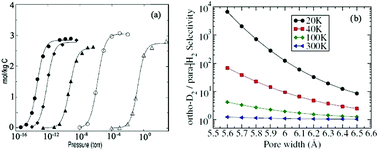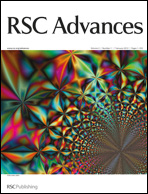Quantum sieving: feasibility and challenges for the separation of hydrogen isotopes in nanoporous materials
Abstract
Quantum effects on the molecular adsorption and migration in confined porous materials can not be ignored if the difference between the pore size and molecular hard core is no longer large compared to the de Broglie wavelength of gas molecules. Extensive studies of the quantum sieving have been focused on nanoporous materials due to their potential applications in separating hydrogen (H2) isotopes. This article reviews state-of-the-art research activities in the field of separation, discussing the feasibility of separating H2 isotopes by quantum sieving in nanoporous materials including


 Please wait while we load your content...
Please wait while we load your content...